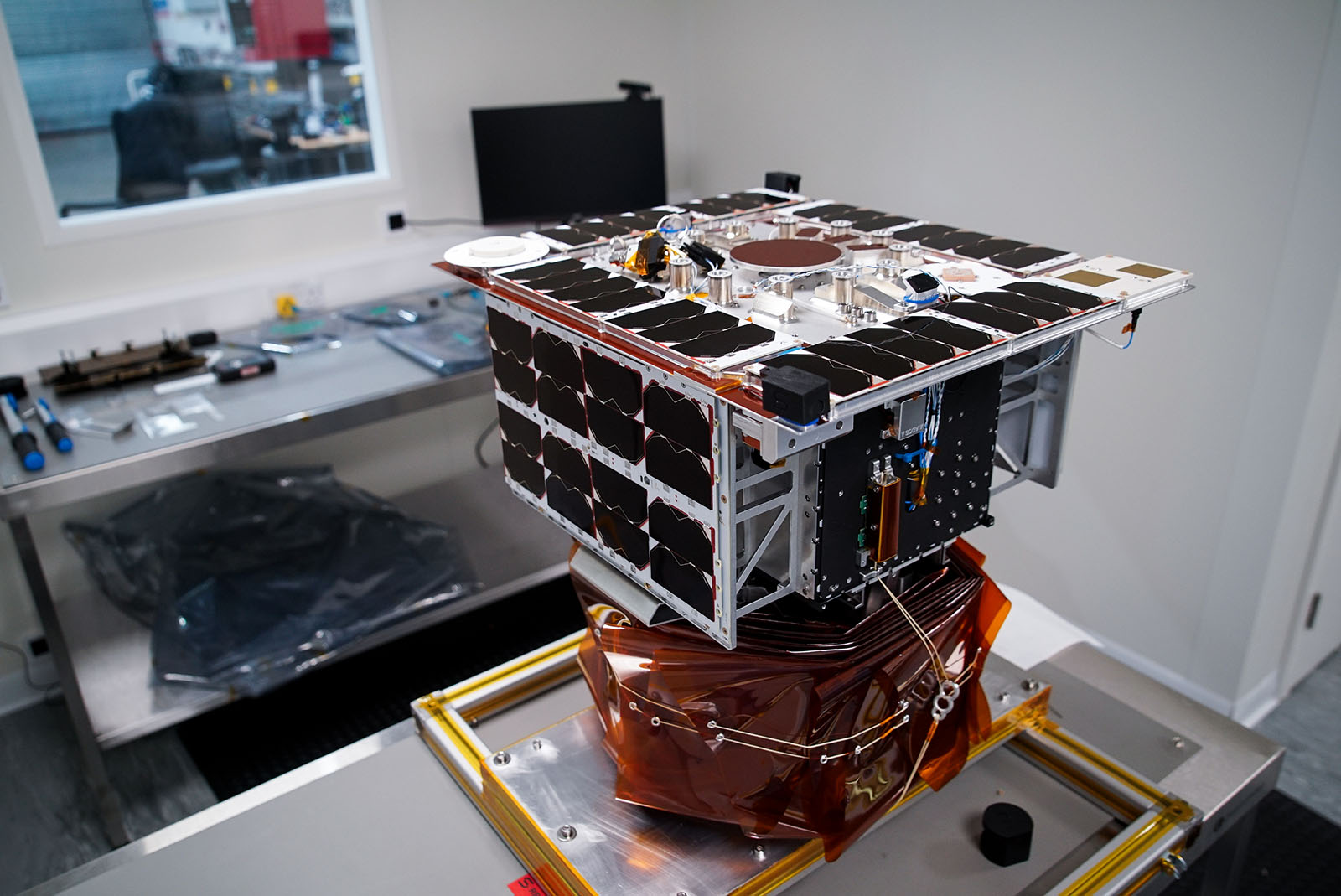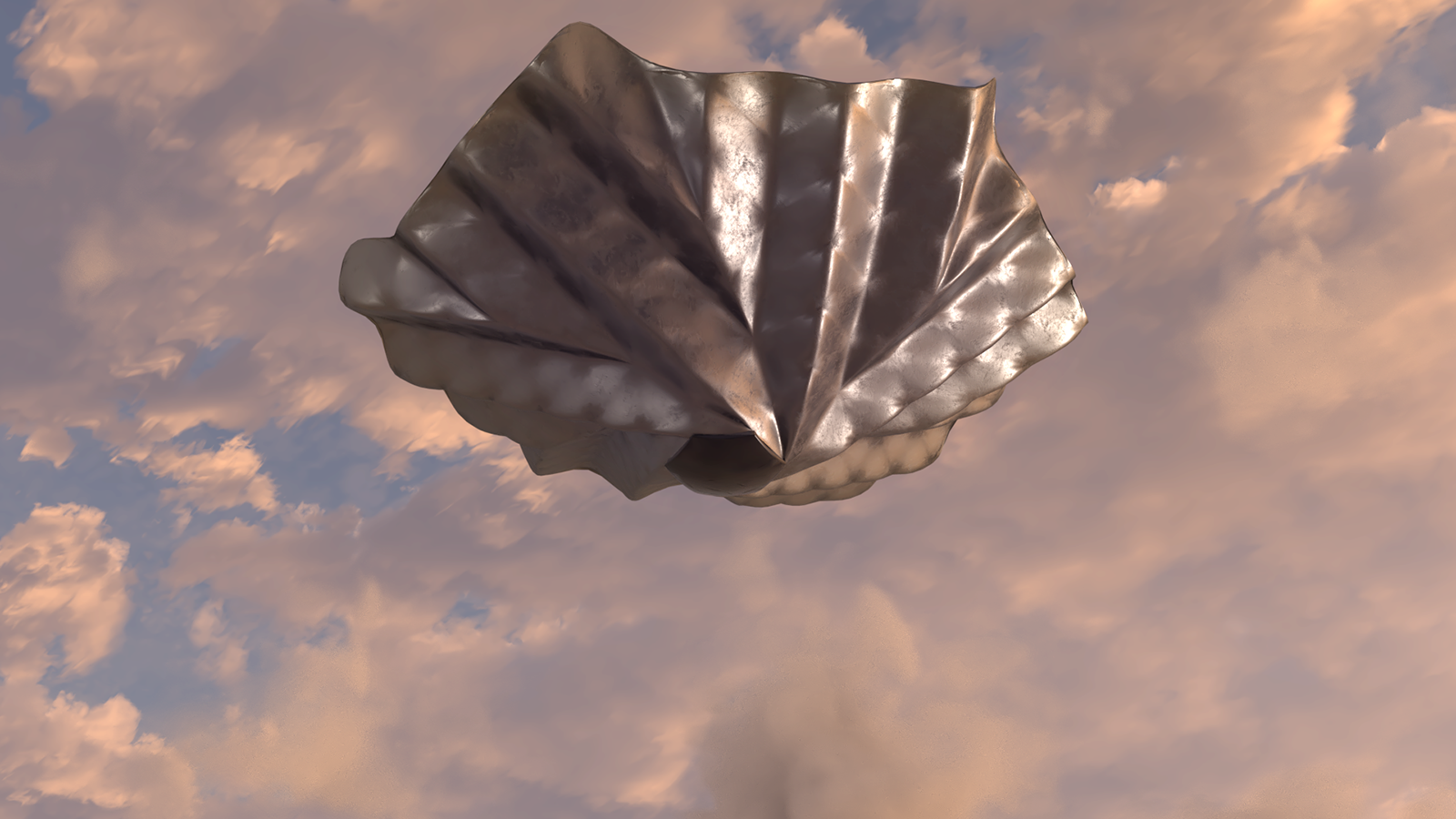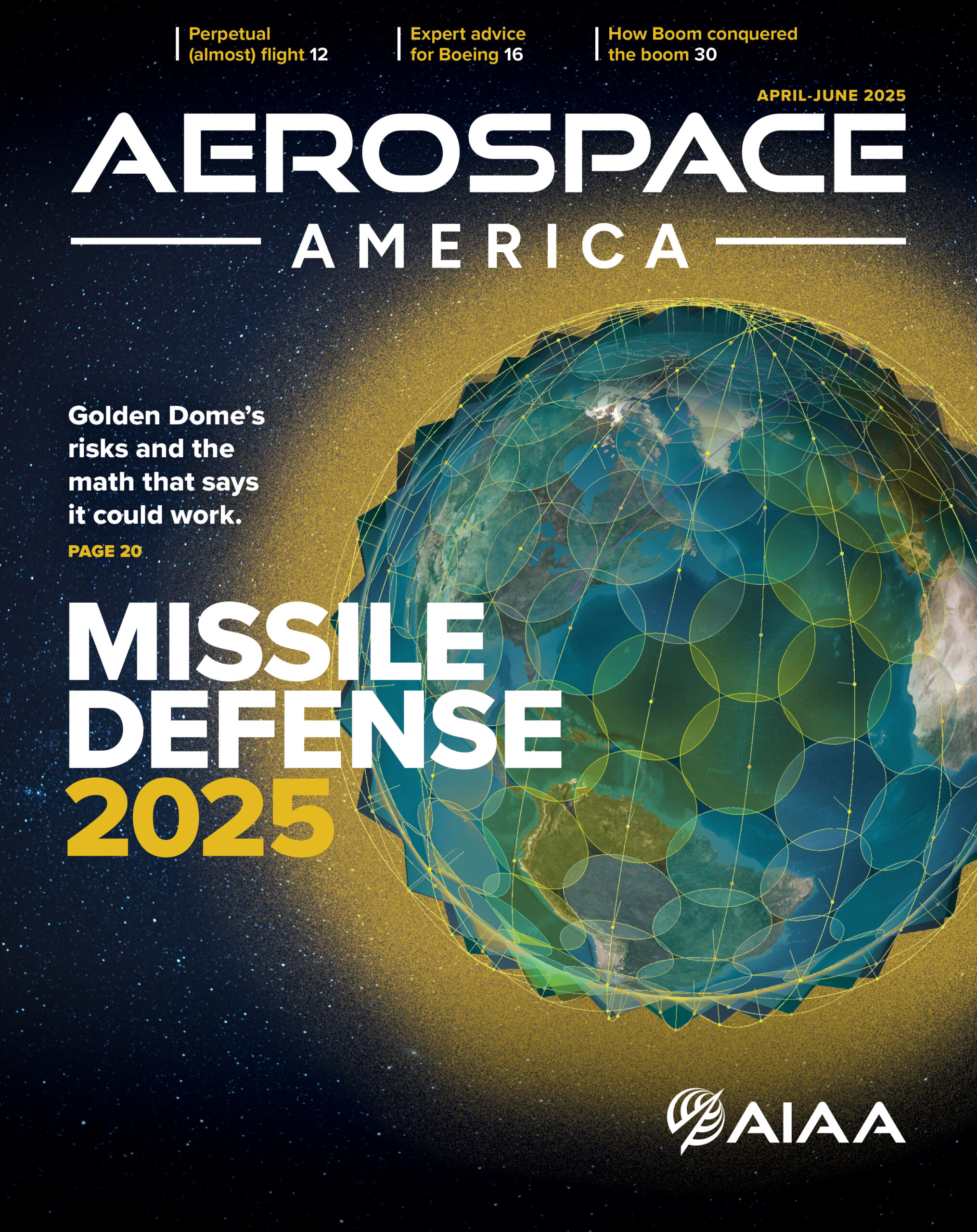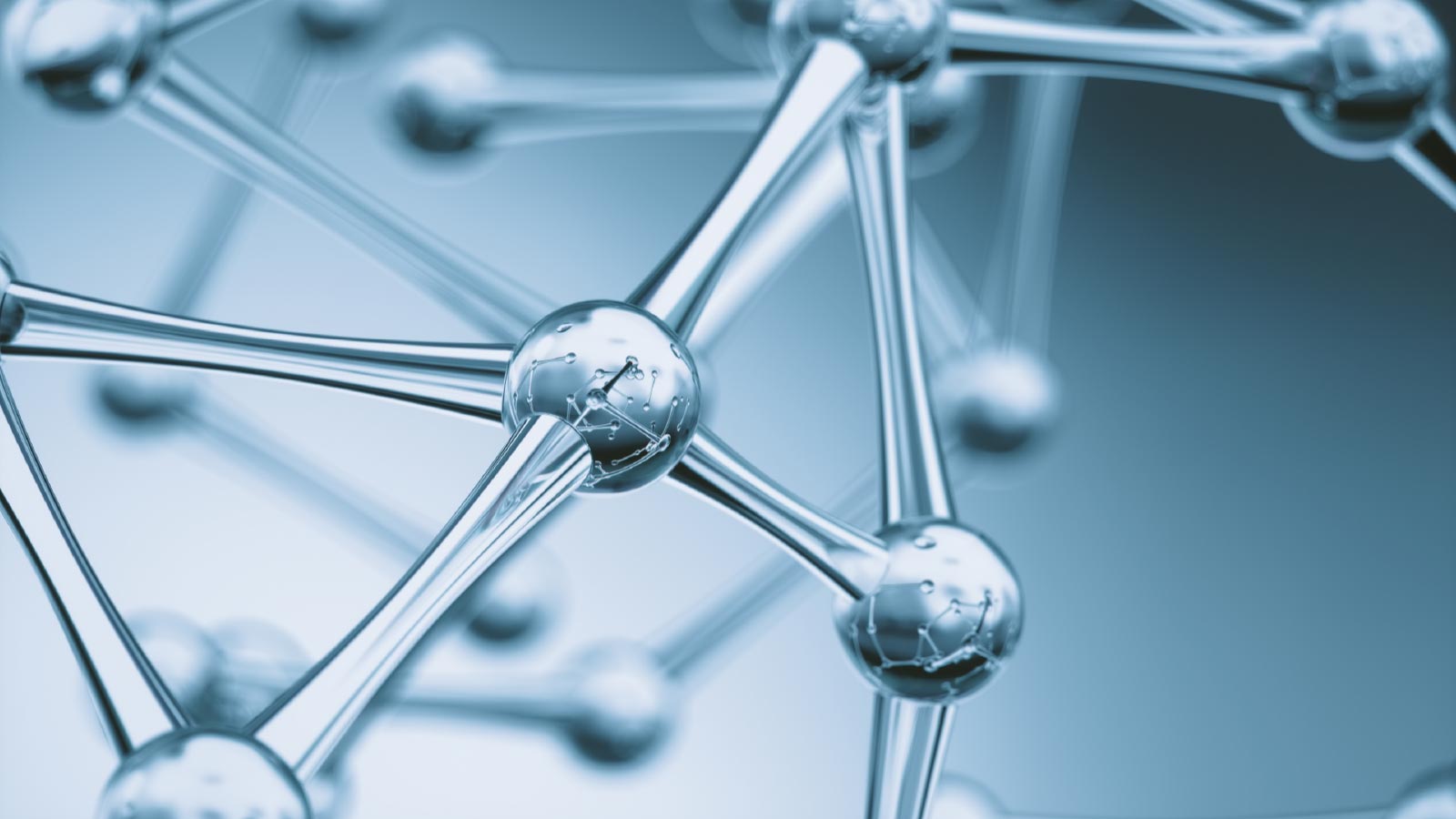Stay Up to Date
Submit your email address to receive the latest industry and Aerospace America news.
Editor’s note: We’ve updated this story to reflect the launch of ForgeStar-1, which occurred after the print magazine was finalized on June 16.
Of all the materials that could be manufactured on orbit, perhaps none are more widely anticipated than the ultra-pure semiconductor crystals that could drastically cut energy usage in a host of emerging technologies on Earth. These range from power-hungry electric cars and 5G mobile networks to the coming class of electric air taxis, plus a raft of defense and national security applications.
The company promising this orbital electronics revolution is Space Forge of the United Kingdom, a 75-person startup based in Cardiff that is preparing for its first in-space demonstration with a spacecraft that was launched last month. The goal? Grow industrially significant amounts of silicon carbide and gallium nitride semiconductor crystals in low-Earth orbit — a process first tested between the 1970s and early 1990s aboard NASA’s space shuttle orbiters and the Skylab, Salyut and Mir stations.
As indicated in those early experiments and ones conducted more recently aboard the International Space Station, the microgravity of LEO allows the crystals to form untethered and untouched by potential contaminants, yielding a material with far fewer defects and impurity levels than those grown terrestrially. This drastically reduces the energy these crystals will waste in the form of heat when they are incorporated into devices like power transistors for electric vehicle power trains and mobile network transmitter amplifiers.
At the center of Space Forge’s envisioned operations is its ForgeStar series of reusable manufacturing satellites, each of which will house a chamber that creates the optimal conditions for growing thin, wafer-like slices of crystals. These wafers must then survive the punishing journey back through the atmosphere, where they will be relocated to a lab for further growth before they are ready for manufacturing.

It’s a complex enterprise, to be sure, with multiple technologies to prove. So for its inaugural ForgeStar-1 mission, Space Forge plans to attempt everything but returning the crystals to Earth.
“I think of ForgeStar-1 as like Apollo 10: a full dress rehearsal of everything up to the landing,” says Andrew Bacon, co-founder and chief technology officer.
For the manufacturing portion, the 30-kilogram satellite has been equipped with a smaller-scale version of the production chamber, into which gaseous feedstocks — for instance, gallium and nitrogen — will be injected. If all works as it should, the gases will coalesce into a ball of levitating matter, building on itself to create a lattice-like structure that doesn’t contact the sides of the containment vessel.
And there’s another benefit, says Bacon: The combination of the vacuum and microgravity kills temperature gradients and buoyancy.
“When you’re trying to grow a uniform material, you don’t want temperature gradients, because they cause differential growth through the material,” he says. “Buoyancy makes hot gases or liquids rise in the opposite direction to gravity, which then means you end up with temperature gradients. But in microgravity, you eliminate buoyancy — so if you heat a ball [of solidifying material] to a certain temperature, it’s uniform throughout the material, and you end up with fewer stress cracks.”
Space Forge is not saying the quantity of crystals it’s aiming to produce or how it will gauge success. But growth is not the only challenge: For the second part of the mission, ForgeStar-1 must unfold and deploy a heat shield that in future return missions will protect the spacecraft and its precious cargo during the fiery atmospheric descent.
For this, Bacon and his team are not relying on the coating of ablative tiles or material that is common for other returning spacecraft. Instead, they designed and patented a large, segmented, umbrella-like shield that unfurls upside-down ahead of the spacecraft (see picture at left). The shield is constructed from an unspecified high-temperature alloy fabric that would radiate the heat away from the spacecraft above.
“It’s like opening a parachute in orbit,” Bacon says. “That changes our reentry trajectory to the point where we’re getting 10 times less heating. And that in turn means we can use heat-shield materials that don’t burn up — or ablate — like most heat shields do.”

If he’s right, the ForgeStar spacecraft and their heat shields should be reusable, with the shield also doubling as the parachute that slows the satellite enough for a gentle touchdown. Space Forge had planned to test this deployment and reentry technique with its ForgeStar-0 demonstrator in early 2023, but that satellite never reached orbit due to an issue with its launch vehicle, a Virgin Orbit LauncherOne rocket.
That experience, Bacon tells me, is why Space Forge was reluctant to announce a launch target for ForgeStar-1, and said only that the satellite was slated to go up on an unnamed ride-sharing mission. “One thing we’ve learned from the Virgin Orbit journey is not to announce launch dates in advance because they will always slip,” he says.
Indeed, since this article was finalized in mid-June, ForgeStar-1 has launched. The satellite went up June 23 aboard a SpaceX Falcon 9, one of 70 payloads for the Transporter 14 rideshare mission.
If all goes well with this demonstration, a second one might not be far behind. ForgeStar-2 would test a full-size version of the crystal production chamber and attempt to return the wafers to Earth.
Once the crystals finish growing, the idea is that Space Forge will sell the semiconductor substrates to merchant market chipmakers.
“Taking electric aircraft as an example, up to 20% of the mass of an electric air taxi is in the cooling system for the power train,” Bacon says. “So if you can halve the energy losses with our semiconductors, you can significantly reduce the mass of the cooling system needed for the overall aircraft — and perhaps go from one passenger to two, which is a very big deal for the economics of air taxis.”
There are many hurdles yet to jump, but Bacon is nothing but confident. “We did not invent this idea,” he says, giving due credit to the 20th-century experimenters. “We just think that finally the time has come for this to happen.”
“Every idea has its day — and today, we believe, is its day.”
About Paul Marks
Paul is a London journalist focused on technology, cybersecurity, aviation and spaceflight. A regular contributor to the BBC, New Scientist and The Economist, his current interests include electric aviation and innovation in new space.
Related Posts
Stay Up to Date
Submit your email address to receive the latest industry and Aerospace America news.




